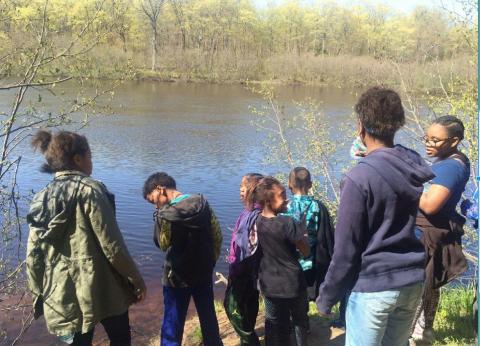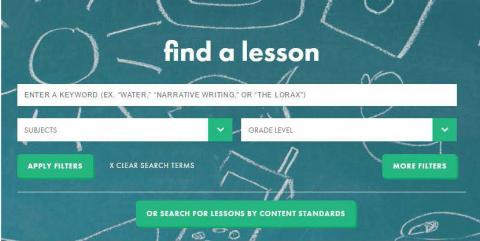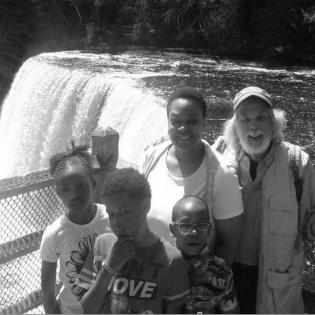Service-Learning in the Classroom: Investigation
Introduction
Service-learning connects curriculum expectations to projects in the “community." Students gain a sense of purpose and internal motivation to participate because what they are doing makes a difference. Service-learning begins with capturings students' hearts, identifying an issue they care about, investigating needs, and researching community resources and partnership. Ultimately, stewardship and service-learning facilitate a climate of accountability that prepares students for responsible citizenship, as well as college and career readiness.
This toolkit will serve as a guide as you develop cross-curricular service-focused units with your professional learning community throughout the school year.

Objectives
Teachers will facilitate project-based service-learning activities that involve the following:
- cross-curricular objectives (embedded in Learning to Give lessons)
- authentic research and investigation(s) of community needs
- philanthropy instruction in how and why to address needs
Students will engage in authentic learning connected to their community that expects them to do the following:
- investigate a real-world issue or “need”
- become aware of their interests and talents
- discuss, analyze, and make decisions as a group (student voice and choice)
What?
Step One: Start with a Learning to Give lesson plan or unit
Choose a Learning to Give lesson that relates to your area of study, a community resource, or an issue you and your students care about. For example, type in "Rivers" and your grade level.

For this example, we chose the unit, “Rivers for the Common Good” because we have access to a river, and our class was talking about the Flint River crisis. This lesson plan gives us the framework to investigate the scientific process and link to language arts and social studies.
Step Two: Link lesson objectives to student interests
Review student data to determine individual requisite skills/ deficit areas and group learning targets/objectives. Consider student interest and community needs to set a vision for service-learning: facilitate pre/ post service reflections.
Step Three: Consider related current issues/ local community resources
What is going on locally that relates to the lesson components? What are some local nonprofit and environmental resources that will help bring the curriculum components to a real place and purpose? What places can you visit and experts can you bring in? See the handout Expand the Lesson below for an example. Science is a rich area to link service, art, history, and critical thinking. More bang for your buck through science!
So What?
Step Four: Encourage student dialogue and promote critical thinking; Meet students where they are
Use feedback and open-ended questions to encourage student dialogue (refer to listening and speaking CCSS), and carefully consider the POWER OF THE PAUSE: Students need time to process the question, the answer, and to navigate the social environment/ peer dynamic within the classroom. Allow students to preview questions prior to the discussion to give students time for individual processing of information; otherwise, you may be assessing socio-emotional responses rather than the student’s learning.
Use analysis to address the hypothesis question created earlier in the investigative process and provide opportunities for individual (i.e. blogs, email streaming, journaling) and group reflection.
Note: Socratic Circles are great for grades 2-12, REALLY!
Now What?
Step Five: Extend learning by connecting stewardship and philanthropy to science, literature, art, and social studies
Refer to learning targets throughout the field experience. Guide students to examine and discuss the qualities of good and poor hypotheses and investigations; directly teach students how to think as they generate a hypothesis. Strongly consider students’ learning styles and integrate demonstrations, skits and illustrations into the investigative process.
Review Literature: Use the LTG anchor text, and use arbookfind.com to locate related fiction and non-fiction books as supplemental reading material to address student interest. Also, use related website readings as supplements for the topic as well.
Hypothesis: Human-Environment Interactions have negatively impacted the Great Lakes ecosystem. Who is responsible for the conservation of the Great Lakes ecosystem? Ocean ecosystems? How can our class help to conserve the Great Lakes ecosystem?
Step Six: Investigate, design the procedure, and take action
Investigate, plan, and conduct the investigation: students gather and analyze data and make conclusion statements. Put the focus of investigation on stewardship, as it relates personal and collective responsibility for environmental conservation. Example: Who is responsible for the conservation of the Great Lakes ecosystem? Ocean ecosystems? How can our class help to conserve the Great Lakes ecosystem?
During your discussions and planning with your professional learning community, develop content-specific rubrics, as needed, to ensure clearly defined student performance expectations. The service-learning strategy practices skills and knowledge of many Common Core Standards and Life/ Physical Science content.
And bring community awareness to your students' work by using this step-by-step media and timeline guide.
Step Seven: Establish community partners
Community Partners: Support your field experiences by forging, establishing, and sustaining relationships with community partners, including the acquisition of grant funds. (Don’t forget to recommend service-learning as a strategy in the School Improvement Plan!). Have students contact community partners to discuss their need(s), then develop a plan to address the need(s). As you implement Learning to Give lessons, reach out and collaborate with other Learning to Give teachers, and share resources! Your list of community partners will grow!
- Partner with Detroit International Wildlife Refuge to plan for field experiences related to the wetlands and to discuss the relationship between rivers and the wetlands: https://www.fws.gov/refuge/detroit_river/refuge_units.html
- Partner with Southeast Michigan Stewardship Coalition to acquire grant monies to plan alternate field investigation in urban areas and to collaborate with other urban educators: http://semiscoalition.org/
- Partner with Alliance for the Great Lakes to plan real-life philanthropic events: https://greatlakes.org/
- Partner with Belle Isle Nature Zoo to plan field experience/ investigations: https://belleislenaturecenter.detroitzoo.org
